MO Tested: Bridgestone Battlax Hypersport S22 Review

Evolutionary updates to an already potent sporting street tire
Why introduce a new street tire to the motorcycle press on a race track? It’s a fair question with a relatively simple answer. Sporting rubber – even that designed for the street – has evolved so much in the past decade that exploring their limits can only be safely approached in a closed course environment. The designers clearly felt this way about the Bridgestone Battlax Hypersport S22 tire when they flew journos from around the world to the legendary Circuito de Jerez in Spain to see what this new rubber was capable of doing. That was their story at least, and we’re down with it.
Shop for Bridgestone S22 tires here
Whereas the Bridgestone Battlax Hypersport S21, introduced in 2016, was a revolutionary step forward in technology, claiming roughly a 36% increase in traction over the previous generation, the S22 is an evolutionary update that seeks to increase all of the characteristics that made the S21 a great sport tire without losing anything, While I can’t attest to two of the claims – increased wet weather grip and unchanged tire longevity – I can say that the S22 is a much-improved tire for those who want a street tire that can handle the rigors of everyday life, weekends on winding mountain roads, and the pressures of a track day.
Wet weather performance
While Mother Nature deemed that it would be sunny and dry on my day at Jerez, a hefty amount of Bridgestone’s efforts regarding the S22 were directed towards wet weather performance. The primary change in the S22 is an increase in the sea/land ratio of the tire tread, meaning larger voids (grooves) in the tread to channel away more water. The groove position and angle on the tread relative to rotation also assists in this role, with the majority of this change coming in the shoulder of the tread, which is associated with cornering. Often when the amount of grooving is increased in a tire, a penalty is paid in longevity, as the groove edges tend to flex and increase wear. According to Bridgestone, the S22 utilizes a special 3D groove edge shape for optimal rigidity to combat this tendency. Still, we’ll just have to take Bridgestone’s word on all of that since I only had a day’s ride on the track.
More is better
Bridgestone’s goals for the S22 in the dry could be best described as “more is more.” Bridgestone wanted more quickness in steering, more feel, and more grip without compromising longevity.
Since the S22, like the S21, is a multi-compound tire, let’s start at the center and work our way out to the edges. The front tire uses two compounds – harder one in the center and two softer ones on the edges. According to Bridgestone, the front tire has a new compound that “can function across a wide range of temperature conditions, including lower temperatures. This allows the tire to deliver higher grip on dry surfaces.”
For the rear tire, the center compound’s silica provides the grip and the wear resistance, and to get more silica in contact with the road, the size of the silica molecules was reduced. By shrinking their size, more silica molecules could actually fit into the same surface area, for a claimed 25% bump in contact with the pavement. The sides get two different traction compounds for when the bike is leaned over with the outer one – the one without the grooves – being the stickiest.
One of Bridgestone’s goals with the S22 was to increase the contact patch size and decrease the slippage area at the edge of the contact patch. Utilizing Bridgestone’s ULTIMAT EYE technology, a proprietary tire dyno that allows engineers to measure contact patch grip and slippage in a controllable/repeatable manner, the designers were able to test a wide variety of compounds and profiles. Through this testing, the slippage at the back edge of both front and rear contact patches was reduced. The payoff for this effort is increased cornering grip and lessened tire wear – a result that Bridgestone claims to work better in all riding conditions.
Rubber and the road
Starting our day in 46° F temperatures – and with no tire warmers – illustrated how quickly the S22s can get up to temperature. With the initial lap being the first time I’d ever turned a wheel at Jerez, there was little danger of me pushing the tires beyond their cold temperature level of grip, but by my third lap, my familiarity with the track layout and my confidence in the S22’s grip had my knee skimming the pavement with nary a squirm nor a wiggle.
Bridgestone’s S21 tires have a reputation for providing good grip in a wide variety of riding conditions but with steering that was a bit slower than their competitors’ comparable models (think Dunlop Q3+, Michelin Power RS, and Pirelli Diablo Supercorsa SP). The S22 was designed to remedy this problem. From the moment I got up to speed on any of the four bikes ( BMW S1000RR, Kawasaki ZX-6R, KTM 1290 Super Duke R, and Suzuki GSX-S1000) I rode over the course of the day, the steering was quick and precise – whether on the brakes or off. Although Bridgestone claims a 15% increase in cornering speed thanks to the improved grip of the S22s, I can only say that there was grip aplenty, and when the tires did decide to slide a bit, it was predictable.
This increase in steering quickness didn’t come at the expense of the S22’s stability under acceleration. Being street tires on 1000cc (or larger) sportbikes, it was easy to get the rear tire to request the intervention of rider aids – if that’s the way you ride. Of course, by the end of the day, with approximately six hours of track time under their belts, even riders like myself, who prefer to be gentler on their throttle inputs, could feel the bacon-saving efforts of the traction control. These are street tires, after all. In fact, if you’re an aggressive track day rider, I’d recommend something designed explicitly for track use. That said, for the average quick rider, say slow A group or fast B group rider, the S22 will work fine in the closed course environment.
On the street, given the quick warm-up time I experienced on the S22s, I think most sport riders will be quite comfortable with the cornering abilities provided by the tires. My time at Jerez certainly made me aware of how much extra grip they’d have left in their quiver on a street ride. I know that I’d love to mount a set on my Yamaha R6 for some SoCal canyon duty. Maybe I’d even get to ride them in the wet.
Bridgestone Battlax S22 tires have been in dealerships since January in most popular sportbike sizes, and the lightweight class will see the introduction of S22s in 2020. The fronts retail for $211, and the rear costs $220 – $305.
In Gear
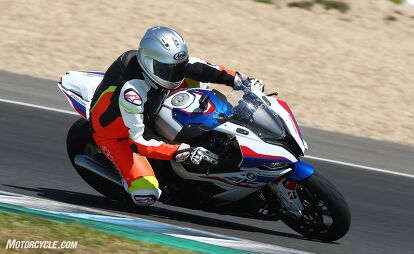
- Helmet: Arai Corsair-X Helmet Starting at $850
- Suit: Alpinestars Missile $1,000
- Air Bag: Alpinestars Tech Air Race Vest $1,150
- Gloves: Alpinestars GP Plus – Discontinued
Boots: Alpinestars Supertech-R $500
Shop for Bridgestone S22 tires here
We are committed to finding, researching, and recommending the best products. We earn commissions from purchases you make using the retail links in our product reviews and other articles. Learn more about how this works.

Like most of the best happenings in his life, Evans stumbled into his motojournalism career. While on his way to a planned life in academia, he applied for a job at a motorcycle magazine, thinking he’d get the opportunity to write some freelance articles. Instead, he was offered a full-time job in which he discovered he could actually get paid to ride other people’s motorcycles – and he’s never looked back. Over the 25 years he’s been in the motorcycle industry, Evans has written two books, 101 Sportbike Performance Projects and How to Modify Your Metric Cruiser, and has ridden just about every production motorcycle manufactured. Evans has a deep love of motorcycles and believes they are a force for good in the world.
More by Evans Brasfield





















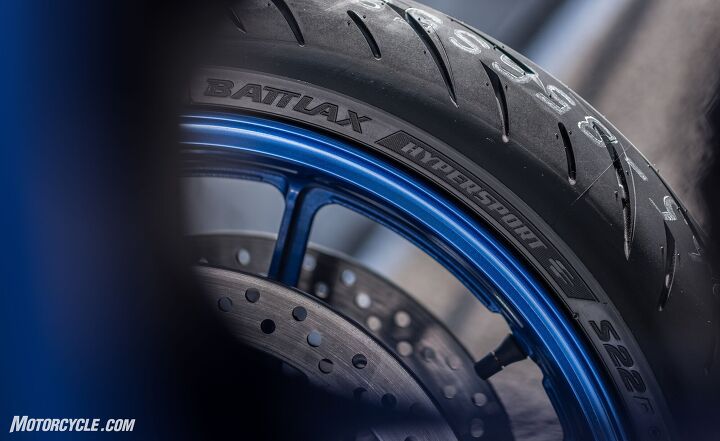















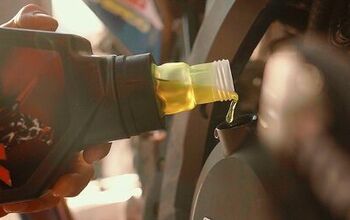
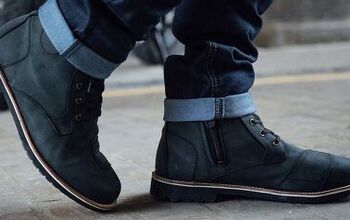







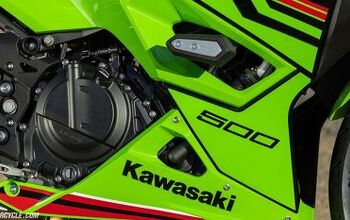







Comments
Join the conversation
It would be good to see a comparison on this tire with the other leading contenders. A day on track and one on the road. They all sound good in isolation, but there must be some differences that would help a consumer pick the best tire for their riding. And yes, I've seen the YouTube video talking head comparisons, and they are helpful, but nothing beats learning the results of actual use.
I'm currently running the 110/140 s22's on my little super worked on 250r. I'm incredibly impressed, especially with the front tire and it's ability to stick and turn at +/- 100mph. It's like night and day with the previous Conti Attack front which wanted to fall into turns after a certain lean angle. With the S22, it's smooth transition all the way over. One thing I will note: The S22 front likes 38 psi up front, which is 6 lbs more than I typically set my front tire (32psi) for aggressive street riding. For some reason, 38 psi seems to be the tire's sweet spot.